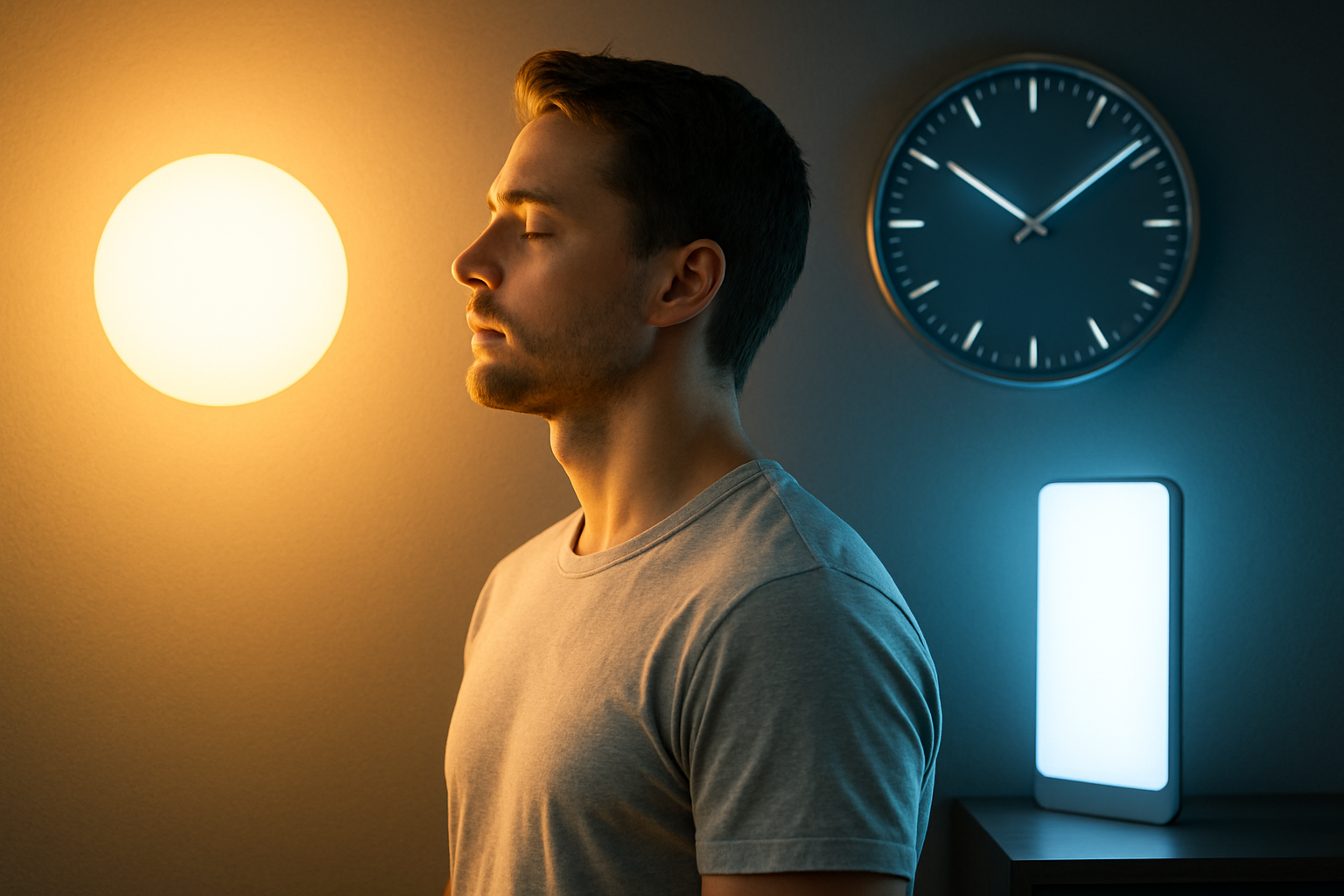Biohacking Your Circadian Rhythm: The Cutting-Edge Science of Light Exposure
Have you ever wondered why you feel energized at certain times of the day and sluggish at others? The answer lies in your circadian rhythm, the internal biological clock that governs nearly every aspect of your physiology. But what if you could harness the power of light to optimize this intricate system? Welcome to the fascinating world of circadian biohacking, where cutting-edge science meets ancient wisdom to revolutionize your health and well-being.

The SCN relies heavily on environmental cues, with light being the most powerful zeitgeber (time-giver). For millennia, humans lived in harmony with the natural light-dark cycle. However, the advent of artificial lighting and digital screens has disrupted this delicate balance, leading to a host of health issues, from sleep disorders to metabolic dysfunction.
The Light Revolution: Beyond Blue Light Blockers
While blue light blockers have gained popularity in recent years, the science of light exposure goes far beyond simply filtering out certain wavelengths. Researchers are now exploring the intricate relationship between different light spectra and our circadian biology.
Studies have shown that exposure to specific wavelengths of light at strategic times can reset the circadian clock, improve sleep quality, and enhance cognitive performance. For instance, blue-enriched light in the morning has been found to increase alertness and improve mood, while warm, amber light in the evening promotes melatonin production and prepares the body for sleep.
Chronotherapy: Timing Is Everything
One of the most exciting developments in circadian science is chronotherapy, the practice of aligning medical treatments with the body’s natural rhythms. This approach recognizes that the efficacy and side effects of medications can vary dramatically depending on the time of administration.
For example, research has shown that taking blood pressure medication at night, when the body naturally lowers blood pressure, can be more effective in controlling hypertension and reducing cardiovascular risks. Similarly, timing chemotherapy treatments to coincide with cancer cells’ most vulnerable phases has shown promise in improving outcomes and reducing side effects.
The Gut-Clock Connection
Recent studies have uncovered a fascinating link between the circadian rhythm and the gut microbiome. It turns out that our gut bacteria have their own circadian rhythms, which are influenced by our eating patterns and light exposure.
This discovery has led to the concept of “chrono-nutrition,” where meal timing is tailored to optimize metabolic health. For instance, eating in sync with your circadian rhythm – with larger meals earlier in the day and lighter, earlier dinners – has been associated with improved weight management and metabolic function.
Practical Applications: Biohacking Your Light Environment
Armed with this knowledge, how can we apply circadian science to optimize our daily lives? Here are some cutting-edge strategies:
-
Invest in circadian lighting systems that mimic natural light patterns throughout the day
-
Use light therapy devices to boost morning alertness and regulate sleep-wake cycles
-
Practice “dark therapy” by minimizing light exposure in the evening, especially from blue-rich sources
-
Align meal times with your circadian rhythm, focusing on earlier, lighter dinners
-
Consider chronotherapy when taking medications or supplements
Illuminating Facts: Shedding Light on Circadian Science
-
Our circadian rhythm influences over 50% of our genome, affecting virtually every physiological process
-
Exposure to sunlight within an hour of waking can help reset your circadian clock and improve sleep quality
-
The human eye contains non-visual photoreceptors that specifically regulate circadian rhythms
-
Shift workers have a higher risk of cardiovascular disease, diabetes, and certain cancers due to circadian disruption
-
Even brief exposure to light during the night can suppress melatonin production and disrupt sleep patterns
As we continue to unravel the mysteries of our internal clocks, the potential for optimizing health through circadian biohacking is immense. By aligning our lifestyles with the rhythms nature intended, we can unlock new levels of vitality, cognitive performance, and overall well-being. The future of health is bright, and it’s time to step into the light.





